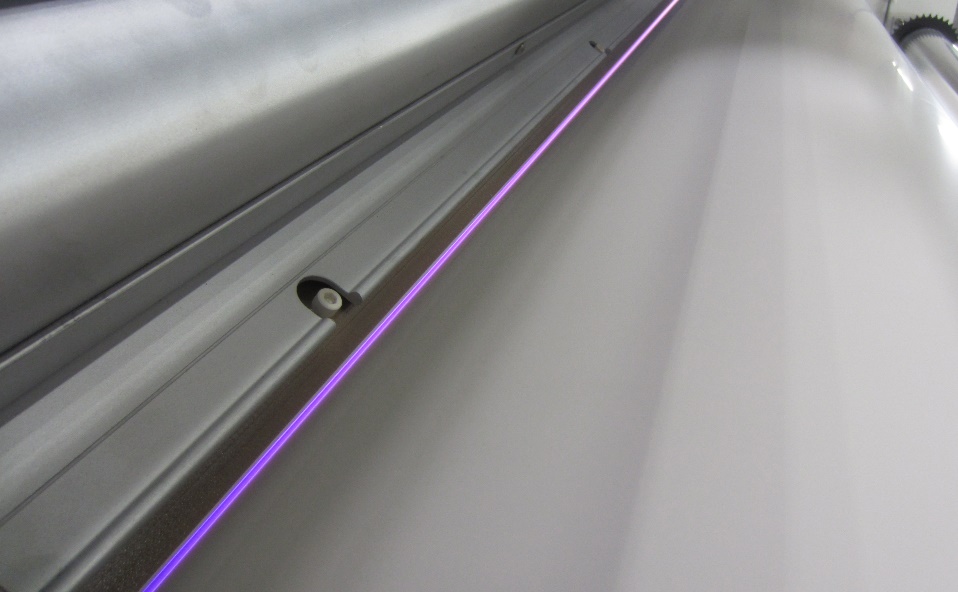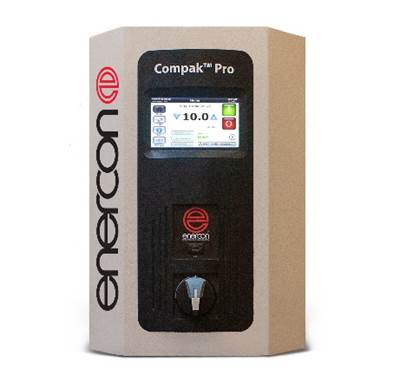Best Practices: Corona Treating Pretreated Films Prior to Converting
- Published: August 02, 2021
By: Enercon Industries’ Tom Gilbertson, Vice President Application Engineering & Mark Plantier, Vice President Marketing
You may have heard of the phrases “bump-treating”, “re-treat”, or “refresh treat.” They all refer to treating a film inline prior to converting. You might wonder why converters need to do this if they are already purchasing pretreated films from film extruders. The answer lies in the details of how corona treaters improve surface energy and how time, additives, and contamination work to undermine the effects of treatment.

From resin to converted product
The purpose of surface treatment is to improve wettability and promote adhesion. When most films are extruded from resin, their surfaces are non-porous and chemically inert with very low surface energy. Film extruders corona treat their freshly extruded films to increase its surface energy. In fact, films that are not corona treated at the time of extrusion may never be receptive to future corona treatment. (Spoiler alert: If you plan on converting films, always buy pretreated films from your suppliers.)
Whether being treated at the time of extrusion or inline prior to converting, a corona treater’s process is the same. The treater generates a corona (ionized air) which removes organic and inorganic contaminants from the film’s surface layer while oxidizing the surface and activating it for increased wettability and higher surface energy.
Surface energy is commonly measured in units called dynes. One (1) dyne equals a centimeter-gram-second unit of force. Most converters will have a target dyne level range that works well for their specific process. While dyne levels do not guarantee adhesion, generally speaking, higher dyne levels produce better adhesion results than lower dyne levels.
|
Process: |
Converting |
||
|
Ink/Coating Type: |
Water |
Solvent |
UV |
|
PE |
40-44 |
36-40 |
40-50 |
|
PP |
40-44 |
36-40 |
40-50 |
|
PVC |
40-44 |
36-40 |
40-50 |
|
PET |
40-52 |
40-46 |
40-54 |
|
PS |
40-44 |
36-40 |
40-48 |
Table: Typical Dyne Levels for Converting
So why don’t film extruders simply treat the films to the levels needed for converting? It’s because of surface energy decay.
Surface energy decay
The increase in a film’s surface energy is not permanent. Surface energy decays over time and usually levels out at a level higher than the film’s initial inert state, but lower than what is needed for converting.
The rate of decay is dependent on a variety of circumstances including the film’s inherent ability to retain surface energy, storage environment and additives.
Slip additives are used to make the film easier to handle in subsequent converting processes. Other additives may be used to impart properties that are needed in the film’s ultimate use, such as flexible packaging applications.
In either case, these additives will ultimately migrate to the film’s surface and create a barrier to successful adhesion. Unless your operation has ultimate control over the initial treatment levels, storage conditions, timely supply and use of the film, it will not be practical to expect successful bonding with inks, laminates and coatings that have not been re-treated.
What happens if you don’t re-treat?
If you attempt to print, coat or laminate a film with a low surface energy, you’re likely to see poor results. For many applications, you will immediately see failed adhesion that will literally stop the press. Or, you may see imperfect results that your quality control team will catch before you ship the product. Worse yet, your customer may be the first to recognize that something is not right with your product.
As mentioned before, surface energy does not guarantee adhesion. It certainly is possible to see successful adhesion with a film that has a surface energy level a bit below your target. However, there is significant risk when you do not treat immediately prior to converting. We asked some industry leaders for their thoughts on this.
What industry experts say about bump treating
An instructor from a flexographic printing program says, “Films are pretreated, but they're not guaranteed to be perfect when it comes time to print. Treatment degrades over time, so that's one issue you have to contend with. And, even if the film makes the grade on a dyne test, you still have the possibility of additives rising to the surface. These surface imperfections can result in pinholing and other quality issues. A corona treater can help eliminate these problems."
A director of engineering from a company that offers custom coating sees other benefits to bump treating. "There's something to be said for a fresh treat. Dyne level does not always guarantee adhesion. Dyne level is simply a measurement of wetting-out. We've seen materials with equal dyne levels, one freshly treated and one from inventory; the freshly treated material consistently provides the better adhesion."
Water-based applications almost always require treating inline, but you may be surprised to learn that many converters find benefits from bump treating solvent processes as well. One solvent printing operations manager recently told us, “There's no doubt that our lines with corona treaters have less delays and downtime. The treaters provide a safety net that assures surface dyne levels are optimal for printing."
Take control of your operation
By following the industry best practice of treating inline prior to printing, coating or laminating, converters can eliminate surface energy as a process variable. With a corona treater, a successful process “operating window” greatly expands.

New power supplies feature artificial intelligence for maximum uptime
Which corona treater design will work best for your application? Most converters use High Definition corona generated by high-powered ceramic electrodes and a proprietary ground roll covering that is effective at treating both conductive and nonconductive films. New corona treater power supplies are also making it easier for operations with simple-to-use touchscreen interfaces that are backed by artificial intelligence and support Industry 4.0 integrations.








